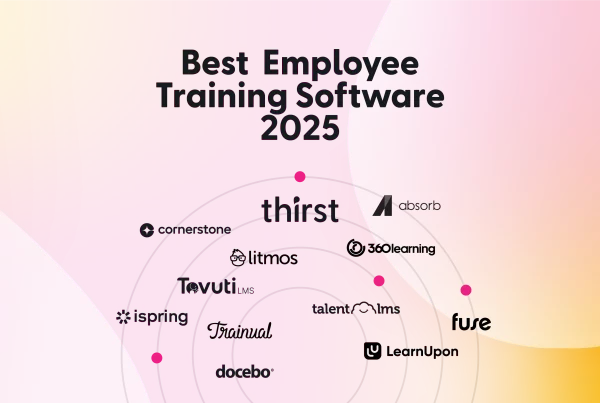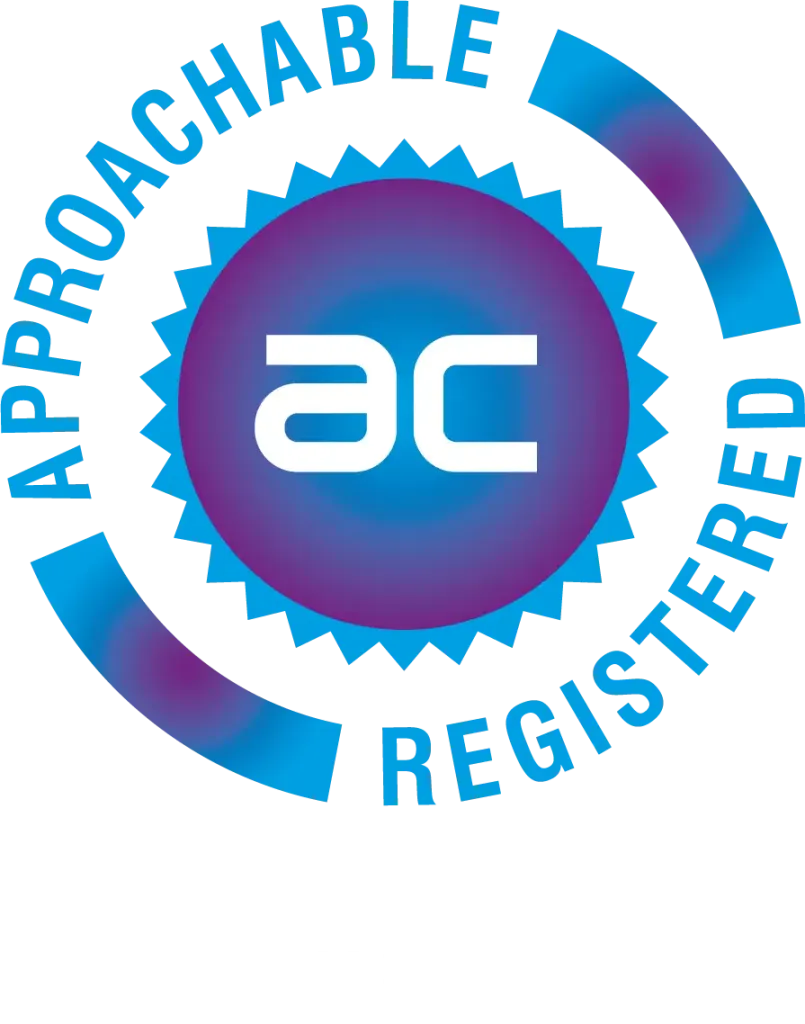Have you ever wondered which skillsets are in abundance and which skillsets are sparse within your business?
Some skill sets are easy to spot.
For example, an expansive, strong sales force means your business should easily attract new customers. A strong customer service team should mean that your business should provide stellar customer service.
Sounds straightforward, right?
But what if you want to identify where specific skills lie? We’re talking about leadership, delegation, and time management. Communication, problem-solving, networking?
Simple. You need to use skills mapping.
But what exactly is skills mapping? Why is it so important to L&D? What benefits can you reap, and how can you create a skills matrix? Continue reading and the Thirst team will teach you everything you need to know about skills mapping and more. 👇 👇
What Is Skills Mapping?
Skills mapping is the process of identifying or assessing business-wide skills. It helps you gain insight and understanding into how skilled your workforce is and the opportunities for L&D.
By evaluating the individual skillsets of employees of all levels, you can gain insight into individual, team, and business-wide strengths and shortcomings. This is vital.
Why?
It allows you to identify areas of L&D that can be improved and ultimately enhance performance.
The result?
Proficiency across all departments, shrewd hiring decisions and continued success. 😃 😃
What is a Skills Matrix?
A skills matrix is a table, a grid, a chart, or a data tool that indicates team or employee proficiency in a range of tasks. Competencies can be rated out of ten, fifty, or one hundred, or expressed as a percentage.
Check out this example:
| Team Member | Leadership | Time Management | Communication | Teamwork |
| John | 6/10 | 9/10 | 7/10 | 5/10 |
| Lily | 9/10 | 6/10 | 8/10 | 9/10 |
| Mark | 6/10 | 9/10 | 4/10 | 3/10 |
| Julie | 3/10 | 9/10 | 6/10 | 10/10 |
| Peter | 7/10 | 5/10 | 10/10 | 7/10 |
Remember, a skills matrix doesn’t need to be complicated.
Even a basic skills matrix table like the one above, one that features employee names and a core competency rating out of ten, can provide valuable employee performance insight.
Do this, and you’ll be able to clearly identify your strengths, weaknesses, skills gaps in your organisation and where L&D would prove to be the most valuable.
Data-driven businesses promote efficiency. We’d argue that if you want to be a thought leader, even a market leader, you need to leverage data across all departments. Best of all, a data-driven ethos is scalable. From individuals to teams, departments, and the business as a whole, a good, insightful skills matrix can optimise performance and help your business prosper.
What’s the Difference between a Skills Matrix and a Competency Matrix?
The only difference between a skills and competency matrix is how they’re used.
A skills matrix is primarily focused on evaluating employee skills. Think leadership. Time management. Communication. Teamwork. The attributes an employee or employees bring to the table.
But this is just a small aspect of the ‘competencies’ employees—and, by extension, businesses—need.
A competency matrix dives deeper. It highlights more than the skills, evaluating knowledge, attitude, and experience.
Most businesses use a competency matrix to understand the collective knowledge within the business. From this, they can identify gaps and address any shortfalls accordingly.
Why Your L&D Needs Skills Maps
Use L&D skills maps, and you’ll be able to easily identify the people you need to drive your business forward because you’ll see where skills and therefore performance shortfalls are.
This will directly impact your recruitment strategy. Helping you prioritise the talent you need and make better, strategic hiring decisions. Improve individual, departmental, and business-wide efficiency.
Then there’s the cost. 💸
Recruitment is expensive, especially if you use a recruitment agency.
Expect to pay out anywhere from 15–20% of a candidate’s annual salary to 30% for hard-to-fill vacancies to find the right person. And that’s not even considering any productivity drop during the recruitment process.
An astute business knows the candidates it needs to drive productivity, efficiency, and profitability.💰
They’re the candidates who possess the skills needed for the business to thrive!
Identify and evaluate existing skills and competency levels across the business, and it’ll be easy to discover where L&D is required.
But what about in-house training, upskilling or reskilling, personal development, or professional satisfaction?
Well, if you want to improve workplace capabilities and happiness by securing skilled employees in thriving roles, promoting employees with superior skillsets, and even monitoring monthly or quarterly performance, use skills maps.
They are, quite simply, an essential component of successful L&D.
Why does your L&D need skills mapping? It optimises business performance.
The Benefits of Skills Mapping
There are several benefits to skill mapping. To some, these are evident. Clear. Easily identified. To others, the benefits are passive. Are only determined with a bit of thought.
However, understanding the benefits of skills mapping can help decision-makers map out a prosperous future for themselves, 🪜 their teams, and the business as a whole.
Interested in learning about the benefits you could reap if you employ skills mapping? Check out the bullet points below.
Skills mapping:
- Highlight those employees with the greatest value
- Highlight those employees who may benefit from additional training to boost knowledge gaps
- Makes it easy to track the progress of individuals, teams, departments, and the business as a whole
- Helps businesses successfully navigate the hiring process by pinpointing exactly what businesses need, including forecasting future or replacement hires, e.g., during childcare leave
- Provides a clear overview and focal point for navigating recruitment and determining skill shortages
- Identifies employees with general and specialist skillsets
- It boosts employee morale because employees feel like their employers are taking an interest in their professional development
- Mitigates mistakes and issues that can arise when a person with a skillset is incompatible with the role they’re performing.
How to Create a Skills Matrix
Now that you know what skills mapping is, why your L&D needs skills mapping, and the clear benefits of skills mapping, it’s time to create a skills matrix. How do you create one? By following the step-by-step guide below: 👇
Step One: Define the Skills You Need.
Whether you’re creating a skills matrix for a role, a team, a department, or the business, the first thing you need to do is define the core skills you need to reach your goal.
This could be general ‘soft’ skills like leadership or teamwork or specific ‘hard’ skills like knowledge of online collaboration tools like Jira or Confluence. Be as specific as possible. Soft skills are just as important as hard skills.
Start by defining those essential, non-negotiable skills. Own your research. Ask your colleagues about the importance of having specific skills. Write a list of each of the skills and whether they’re beginner, intermediate, or advanced.
Step Two: Create a Grading System
The easiest—and, let’s face it, most logical—way of ranking competence and user skill level is to create a grading system. It’s simple and efficient. All you need to do is figure out how to grade your colleagues. Think grade A’ for excellent or grade C’ for average.
It’s important to understand what works best for your organisation. You may want to keep it simple and use the standard grades above or add a little bit more detail to clarify competence.
For example, someone with novice competence will have a sound understanding of the topic but has yet to apply their knowledge in a practical workplace setting.
‘Professional’ competence will be possessed by someone who has the skills and experience to complete their work. They’re someone who can work independently. Who can proactively solve problems and support junior colleagues in their day-to-day tasks. 🔥
‘Expert’ competence will be demonstrated by someone with comprehensive experience applying the skill in practice. Someone who can clearly communicate their actions and coach colleagues. Someone who follows the trends and shares knowledge. Someone who has earned additional qualifications to excel in their career. 🧐
Step Three: Evaluate Skillsets
The next step to creating a skills matrix is evaluating employees’ skills. There are several ways that you can do this. Each has its own pros and cons; the choice of which to use is yours. Here’s an overview of how to evaluate employee skills:
- Self-evaluation: employees evaluate and grade their own performance.
- Manager evaluation: managers grade employees’ skills
- Team evaluation: team or customer feedback is collected to evaluate employee skills
- Skills assessment: employees complete tests or quizzes to determine their skills
- Certification: fast and accurate way to evaluate specific skills; however, certification is only accessible for senior, highly skilled employees
For a more rounded result, why not ask employees to self-evaluate?
Encourage them to be honest and highlight their strengths and weaknesses. Next, choose a skills assessment and collate results. Finally, ask for the manager’s evaluations. The final grade could be a mixture of all three results.
Data Visualisation
If you want to gain comprehensive insight into employee skillsets, then you need to use data visualisation. Basically, gather all available data and design a visual chart.
Data should be interpreted in a way that’s easiest to understand. Think of a numerical value corresponding to a skill level. E.g., novice = 1, professional = 2, expert = 3.
Once you’ve set the parameters, next assign a value that corresponds to different skill levels. Do this with everyone in the business, and you’ll easily be able to see where you have an abundance of skills and where any shortfalls are.
This is especially useful for recruiting. You can easily see how to optimise talent within the business. Where you have an abundance of skills and where you’re lacking You may discover that you have lots of team players but few leaders. People are proficient in using Microsoft Office but sorely lacking in knowledge and experience of Microsoft Dynamics.
What does this mean? You’ll know right away who you need to recruit to optimise performance. Best of all, you can use data visualisation to gain insight into everything. From product or service knowledge to UX skills. Time management to SMM, find out a wealth of essential, valuable information.
Close Your Skills Gap Faster With Thirst
If you want to give your business a shot of adrenaline, the most important thing is to get the right people in the right roles. This means focusing on skills and performance.
This is where Thirst can help you.
The Thirst AI-powered learning platform empowers L&D professionals to accelerate their learning culture, talent acquisition, leadership development, and internal mobility. It’s your chance to close your skills gap—fast.
Interested in learning more? Book a demo today. 👍
For more e-learning news, advice and information, read the Thirst blog…
The Ultimate Guide to Faster Employee Onboarding | Why Knowledge Sharing Is So Important For Your Learning Culture | Product Knowledge: What it is & How to Develop it







